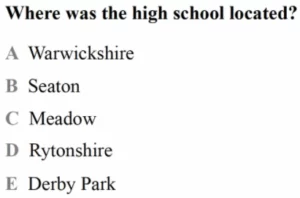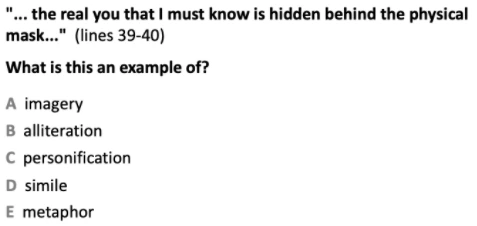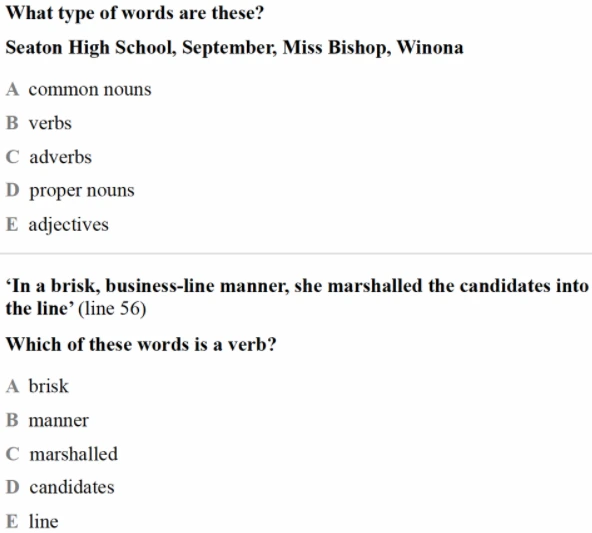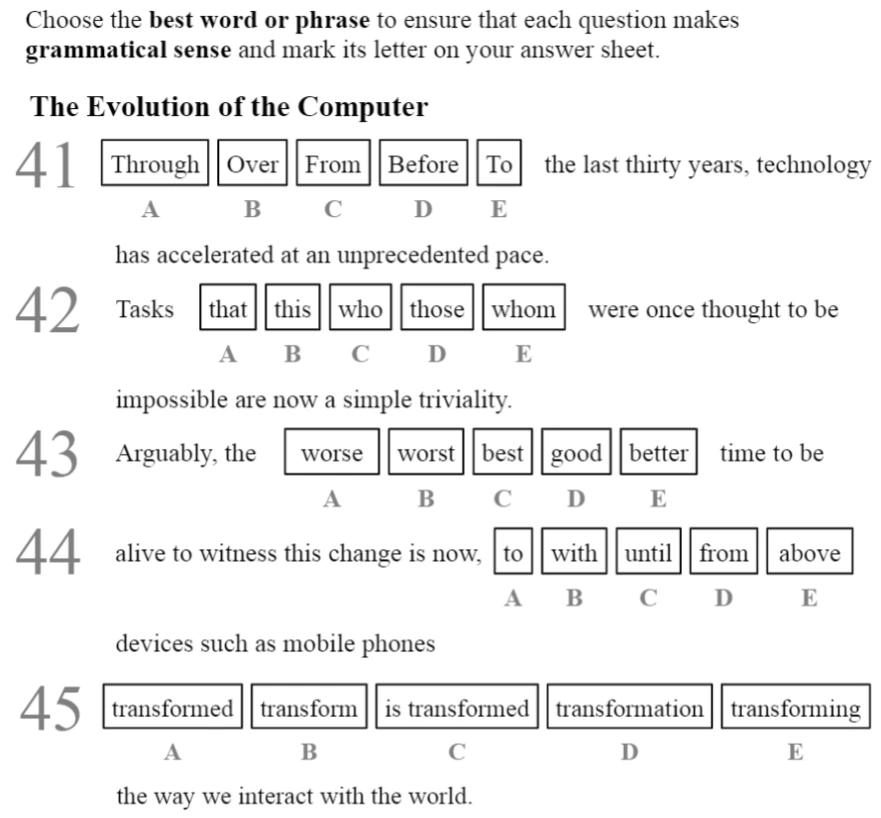Every topic that could come up in a GL 11 Plus English Exam
The GL English 11 plus exam tests the same skills and techniques as the key stage 2 national curriculum. Therefore it should all be relatively familiar to your child when they sit their 11 plus exam at the beginning of year 6.
However the format may be slightly different to what they’re used to, so this article will set out to explore the general format followed by GL’s English exams.
Most GL 11 Plus English exams follow a similar structure: a long reading comprehension activity which takes up the majority of the exam, followed by questions testing students’ SPaG. Some schools also choose to include a creative writing task, however these are often only used to differentiate between two students who have the same score on the rest of the exam.
Reading comprehension
Reading comprehension is not just about being able to read well or quickly. More importantly, it is about being able to grasp the meaning of a passage. A good way to practice this skill is by getting your child to explain the single most important point of each paragraph that they read.
This is the most extensive section of the exam, and consists of a long passage, followed by multiple choice questions testing the following competencies:
 This is the first question type that your child will be tested on. Here, they will be asked a question that has a clear answer in the text, they simply have to find that answer in the text, and choose the multiple-choice option that matches this.
This is the first question type that your child will be tested on. Here, they will be asked a question that has a clear answer in the text, they simply have to find that answer in the text, and choose the multiple-choice option that matches this.
In the example question below, the answer is D because the passage (which is not shown here) explicitly refers to Rytonshire.
 The second type of reading comprehension question is slightly harder as the answer is not explicitly shown in the text. Instead, your child will have to use the context they’re given in the text to come to a sensible conclusion as to which of the options they’re given is the most likely answer to the question.
The second type of reading comprehension question is slightly harder as the answer is not explicitly shown in the text. Instead, your child will have to use the context they’re given in the text to come to a sensible conclusion as to which of the options they’re given is the most likely answer to the question.
In the example question, the answer is E, which we know because while the text (which is not shown here) does not specifically say that she was afraid due to the silence, in the sentence just before Winona starts speaking, it is noted that there is a ‘stony silence’.
 This type of question could test one of two skills, namely inference or vocabulary level. Here, we’re given a word that is found in the text and are asked to find another word which has either the same or a similar meaning. If you have strong vocabulary skills you may be able to answer the question straight away as you already know what the word means. However, usually the words chosen are very unusual or complex, and therefore you may have to read the passage it is found in, in order to try to understand what the word means from context.
This type of question could test one of two skills, namely inference or vocabulary level. Here, we’re given a word that is found in the text and are asked to find another word which has either the same or a similar meaning. If you have strong vocabulary skills you may be able to answer the question straight away as you already know what the word means. However, usually the words chosen are very unusual or complex, and therefore you may have to read the passage it is found in, in order to try to understand what the word means from context.
 The fourth type of question that could come up within the reading comprehension section asks students to identify various literary, grammar or language devices that are used within the text. The techniques that they should be able to recognise and identify may include similes & metaphors, onomatopoeia, alliteration, personification, proverbs and colloquialisms, among others.
The fourth type of question that could come up within the reading comprehension section asks students to identify various literary, grammar or language devices that are used within the text. The techniques that they should be able to recognise and identify may include similes & metaphors, onomatopoeia, alliteration, personification, proverbs and colloquialisms, among others.
 Similarly, the final type of question asks us to recognise and identify which word class is being used. Word classes define how a word can be used grammatically, for example a proper noun is used to identify something or someone, person, or place, such as a person’s name (like ‘John’) or the name of a country (like ‘Greece’), whereas a verb refers to an action, occurrence or state of being, such as the word ‘eat’, which is an action.
Similarly, the final type of question asks us to recognise and identify which word class is being used. Word classes define how a word can be used grammatically, for example a proper noun is used to identify something or someone, person, or place, such as a person’s name (like ‘John’) or the name of a country (like ‘Greece’), whereas a verb refers to an action, occurrence or state of being, such as the word ‘eat’, which is an action.
In the example question, we can see that the words given are proper nouns because they are the names of specific things, eg. ‘September’ is the name of a month, ‘Miss Bishop’ is a person’s name.
SPaG
If you don’t know already, SPaG stands for Spelling, Punctuation and Grammar. In both the spelling and punctuation sections we are given a short passage in which every line is split into four sections. We have to find which section of the line (A, B, C or D) contains an error, or if there is no error at all (E). In the grammar section we are also given a short passage, however rather than find errors we are asked to fill in the gaps by choosing the only option that is grammatically correct given the context of the sentence.
We’ve split each of the three areas of SPaG into specific skills or techniques that will be tested in each. These specific skills will not be explicitly stated in the questions, and instead are things that your child will have to become familiar with and be able to identify when they come up. The best way to do this is by regular practising 11 plus-style questions.
Spelling
In this example question we can see a common spelling mistake that has arisen where the plural rule for the word ‘loaf’ has not been applied properly – the correct spelling would be ‘loaves’, rather than ‘loafs’. Therefore the answer to this question would be A.

Homophones are when two words sound the same but are spelt differently and have different meanings.
In this example, from the context of the sentence we can tell that the word ‘piece’ is incorrect, and it should instead be ‘peace’, its homophone. Therefore the correct answer to this question is B.

This section refers to more general spelling errors that may have arisen due to a range of reasons. One of the best ways to prepare for this kind of question is with regular spelling practice – which your child should already be getting at school but you may want to supplement.
In the example the answer is A because the word ‘terrible’ has been misspelt.

Punctuation
This includes knowing how and when to use full stops, commas, colons, semi-colons, question marks, exclamation marks, brackets, ellipses, dashes and apostrophes.
Here we have two different example questions. In the first one we can see a mistake in section B, where the apostrophe is missing from the word ‘hadn’t’. In the second question the mistake is in section C, where there is an extra and unneeded comma between ‘been’ and ‘reconstruction’.

Direct speech is when we directly quote someone, using inverted commas (”, also known as speech marks) to show the exact words that they have said. It is important to remember to start each piece of speech with a capital letter, put inverted commas before and after pieces of direct speech, and put punctuation marks (such as full stops and question marks) inside of the inverted commas, for example ‘I asked him, “Would you like some sugar in your tea?”’.
Reported speech refers to when we paraphrase what someone has said. In reported speech we do not use inverted commas, for example ‘I asked him if he would like sugar in his tea’.
Grammar
A common noun is the name of a thing (eg a place or object) whereas a proper noun refers to a specific person, place or thing. A good way to differentiate them is to remember that proper nouns usually start with a capital letter whereas common nouns don’t. An example of a proper noun is ‘England’, and an example of a common noun is ‘dog’.
Common nouns can be divided into two types: abstract and concrete. An abstract noun refers to something that does not have a physical form but is still a thing, like ‘joy’, whereas a concrete noun is something physical, that we can experience through at least one of our five senses, like a book.
Collective nouns describe a group or collection of places, people or objects, eg. a pack of wolves.
Pronouns take the place of nouns in a sentence, for example rather than saying ‘Valerie turned Valerie’s laptop on’ we would replace the proper noun, Valerie, with the pronoun, ‘her’, to say ‘Valerie turned her laptop on’.
Verbs are words that describe an action, state or occurrence, for example ‘walk’. Every sentence must include a verb. Verbs also show if an event has already happened, is happening, or will happen in the future. There are certain rules that can be learnt, such as that many verbs in the past tense end in -ed, however these rules don’t always work.
While most verbs are preceded by a noun or pronoun, this is not the case with imperative verbs, which we use when someone is being commanded to do something, eg. ‘go away’.
Another type of verb your child should be aware of is auxiliary verbs, which support other verbs. For example in the sentence ‘she may win’, ‘may’ is an auxiliary verb supporting the verb ’win’.
An adjective is a word that describes a noun. It can come before the noun eg. ‘the scary witch…’ or after the noun eg. ‘the witch is scary’, and they can be listed too, eg. ‘the scary, unfriendly witch’.
Because of this, we know that during the exam, if the word before or after the gap you have to fill in is a noun, it is likely (although not certain) that the word you have to identify is an adjective. This may help you to narrow down your options and rule out similar options that are of different word classes.
An adverb is a word that describes a verb. It can come before the verb eg. ‘Donna joyfully read her book’, or after the verb eg. ‘Donna read her book joyfully’.
Because of this, we know that during the exam, if the word before or after the gap you have to fill in is a verb, it is likely (although not certain) that the word you have to identify to fill in the gap is an adverb. This may help you to narrow down your options and rule out similar options that are of different word classes.
A connective is a word or group of words that connects two separate but linked parts of a sentence together (which are called clauses). If a single word is used to do this it may be called a conjunction. An example of a conjunction is the word ‘because’: ‘She went to Spain because she likes hot weather’. If a group of words is used to perform this purpose, they may be called connecting adverbs, such as the phrase ‘in order to’.
Prepositions are words that tell us when or where something is in relations to something else. Examples of prepositions relating to time are ‘before’ and ‘after’, and examples relating to location include ‘inside’, ‘outside’, ‘above’, ‘below’.
Contractions are when we use an apostrophe to show that we have left out letters from a word, for example ‘it’s’ is a contraction of the words ‘it is’.
Articles, such as ‘the’ and ‘a’, tell us whether a noun is specific or not. For example, if someone were to say ‘can I have a pen’ or ‘can I have some pens’, they are not referring to a specific pen, whereas if they say ‘can I have the pen’ or ‘can I have my pen’ they are referring to a specific one.
Another thing to remember here is that if ‘a’ is followed by a word starting with a vowel sound, it becomes ‘an’, for example ‘an orange’. This sometimes includes words that don’t actually start with a vowel, but do start with a vowel sound, such as ‘an honour’ (honour starts with an ‘o’ sound). As well as this, sometimes words that start with a vowel do not start with a vowel sound, such as ‘a university’ (university starts with a ‘y’ sound).
Creative writing
Only a few schools use creative writing assignments, and even where they do, these are usually only taken into consideration if they need to be used as a decider for the final available place between two candidates who have otherwise got the same score on the exam.
You can check here if your prospective school uses a creative writing section in their 11 plus exam:
If they do and you would like to find out more about this section, as well as receive top tips for preparation, we have a separate blog about creative writing in 11 plus exams, available here.
And there we have it, all of the possible topics and question types that could come up in a GL English paper. Remember to check out all of the question types and topics from the other 11 plus sections here.
As well as that, our brand new English Pack, which features 4 expert-made full-length English practice papers, is now available to order! Check it out here.

